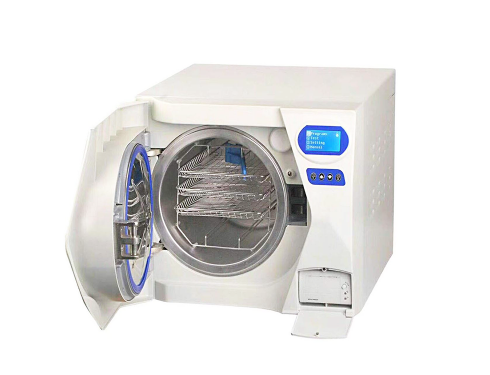Products
Autoclave Class B 17 L
Autoclaves are used for disinfection and sterilisation of medical and laboratory equipment and waste. Autoclaves can decontaminate solid objects, hollow instruments or even liquids.
An Autoclave uses steam to kill microorganisms that are resistant to detergents, this is done by heating to temperatures above boiling point. The heat is delivered via pressurised steam and kills bacteria and other microorganisms by destroying the organisms’ structural proteins and enzymes making them nonfunctional. Most sterilisation can be achieved at 121°C and 15 psi, but many autoclaves allow cycles at higher temperatures, up to 134°C.
The items to be sterilised are placed inside a pressure vessel, often referred to as the chamber. There are 3 phases to the autoclave process:
- Conditioning: Air inhibits sterilisation so must first be removed from the chamber. This process is the conditioning phase. Air can be removed using a vacuum system or by using a series of steam flushes and pressure pulses. Gravity-type sterilisers use steam to displace air in the chamber forcing it down a steriliser drain.
- Exposure: After the air is removed, the steriliser drain is closed and steam is released into the chamber rapidly increasing the pressure and temperature inside. The required sterilisation temperature is held for the time set to sterilise the item.
- Exhaust: During this final phase, the steriliser drain is opened allowing steam to escape, depressurising the vessel and allowing the items in the chamber to dry.

